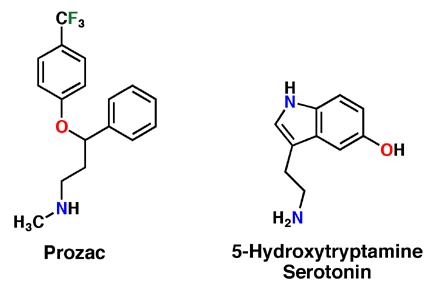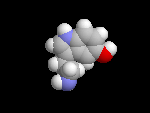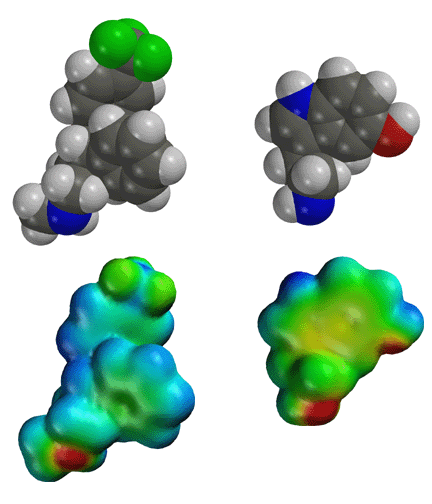


Serotonin, also known as 5-HT (5-hydroxytryptamine), is a neurotransmitter found at the synapses of certain neurons. That is, it is released by the tip of one stimulated neuron, and recognized by a specific serotonin neurotransmitter receptor on an adjacent neuron, causing it to fire. In this way, the nerve impulse is propagated throughout the nervous system. Note that after a nerve fires at a synapse, the neurotransmitter must be taken back up by the original neuron and transported back into a synaptic vesicle so that it is ready to fire again. This so-called “re-uptake” is an extremely important aspect of nervous system function.
Different neurotransimitters are used in neurons that have different functions and are found in different parts of the nervous system. In an oversimplified sense, in neurons that use serotonin as the neurotransmitter are involved with complex brain functions, including an overall feeling of well being vs. anxiety. The amount of serotonin acting in these neurons appears to be key. Depression has been associated with a general lack of serotonin. Our bodies normally regulate the amount of serotonin using sophisticated feedback mechanisms. When these feedback mechanisms are not working correctly, people can experience problems such as depression.
Prozac (aka fluoxetine), is a so-called selective serotonin reuptake inhibitor (SSRI), meaning that after serotonin is released in a neuron synapse, adding prozac allows it to hang around longer before it is taken back up to get ready to fire again. This has the effect of gemerally increasing the amount of serotonin in these synapses. Note that Prozac does not cause serotonin to be released as does amphetamines including ecstasy. Prozac simply allows what is there to hang around longer. The net effect is that patients feel less depressed as their overall sense of well-being gets back to normal. Prozac is different enough in structure that it is not bound by the serotonin neurotransmitter receptors at synapses that cause firing of adjacent neurons, it only binds to the re-uptake proteins on the origninal neuron and inhibits the re-uptake. This is on purpose because it prevents side effects associated with previous anti-depressents. It also appears to reduce aggressive behavior in overly aggressive individuals.
Although studies are continuing and problems may still materialize, at this point there appear to be no serious side effects to longterm use of Prozac, including use in pregnant women. It also does not appear to be addictive, in that patients who interrupt treatment suddenly do not appear to have an "withdrawal" effects normally associated with addictive drugs. The type of serotonin neuron destruction seen with ecstasy use has not been reported for prozac, underscoring the differences between the two drugs, despite the fact that they both resemble serotonin (ecstasy more so, prozac less so) and both operate on neurons that use serotonin as a neurotransmitter.
